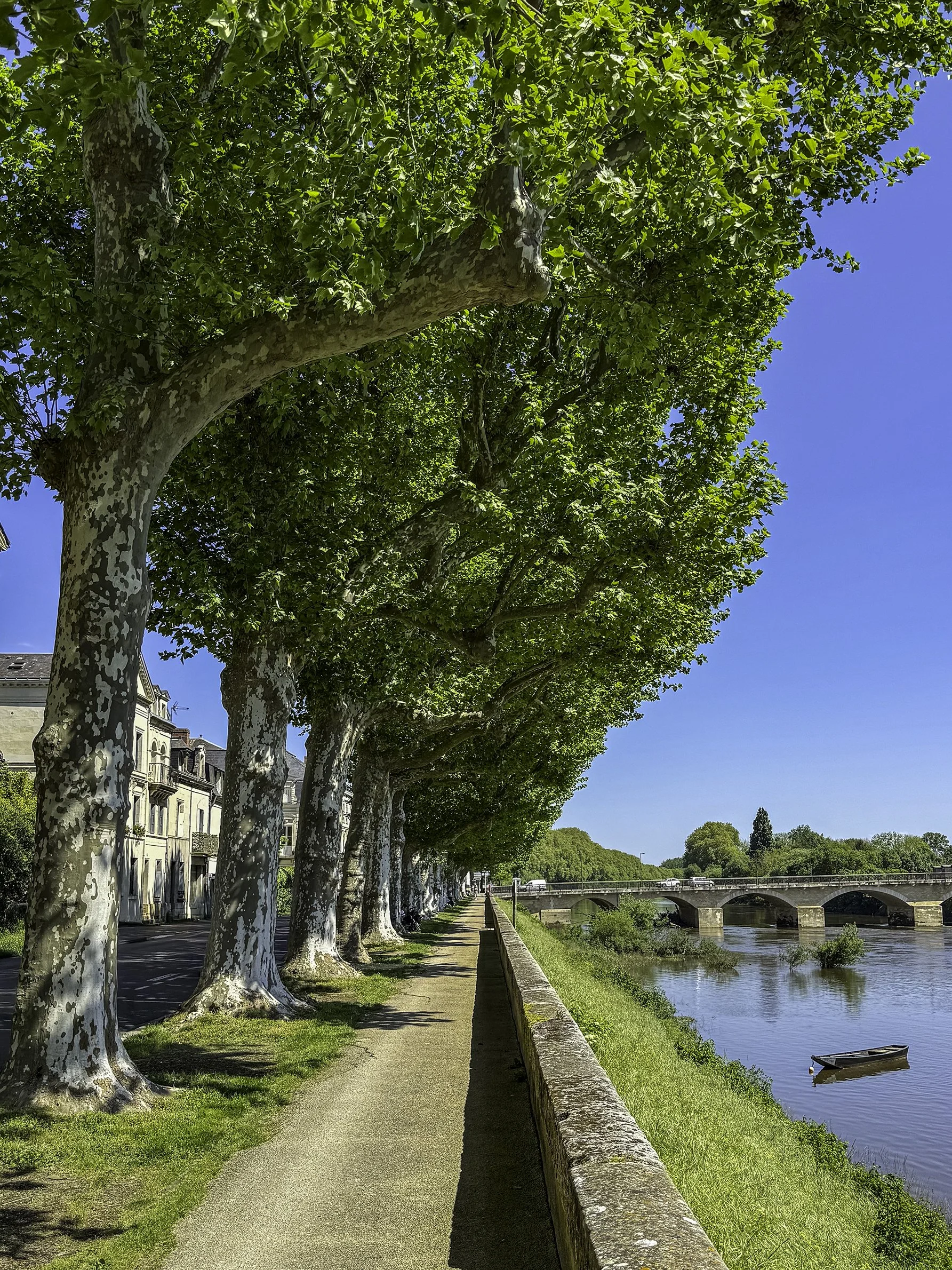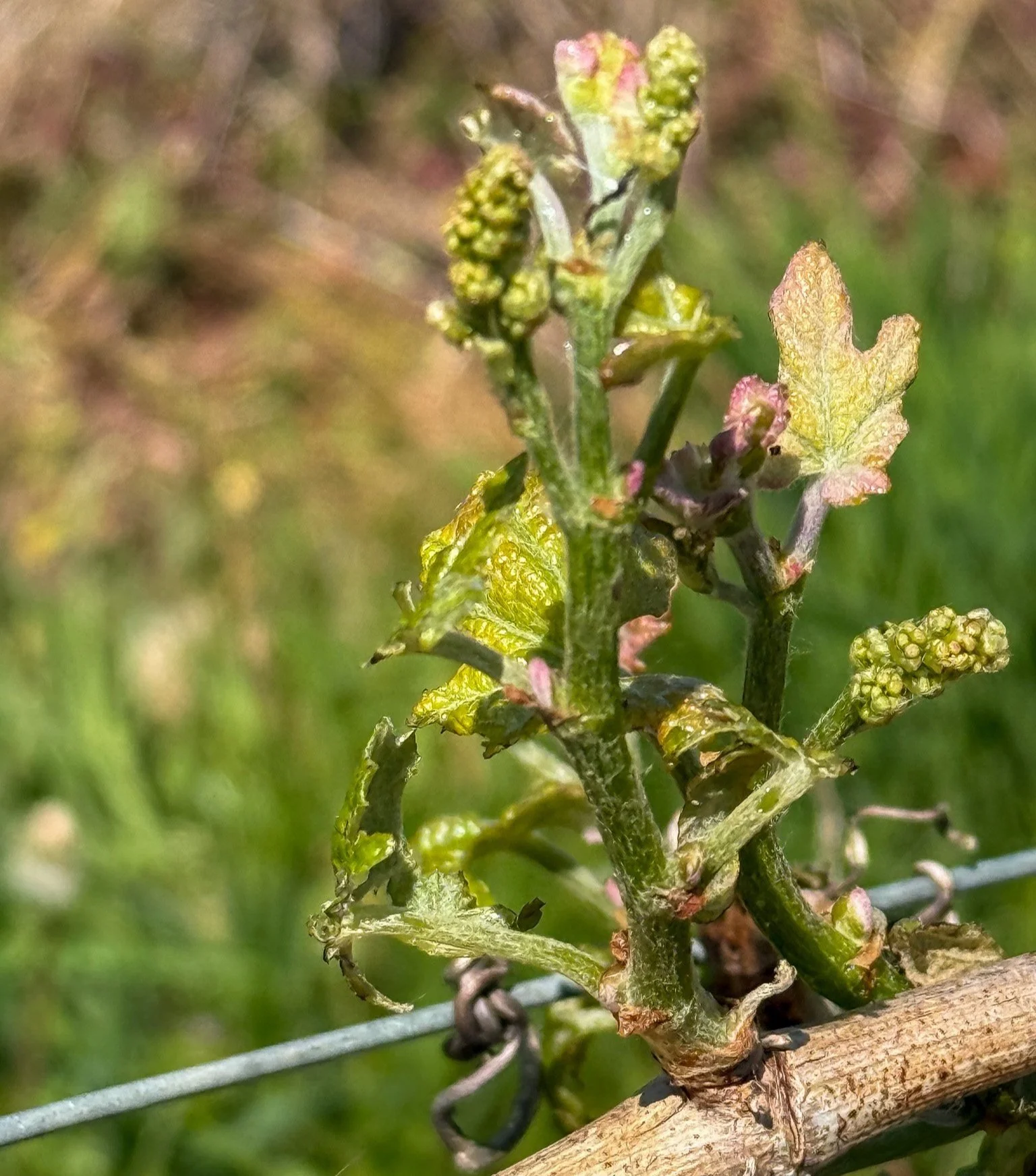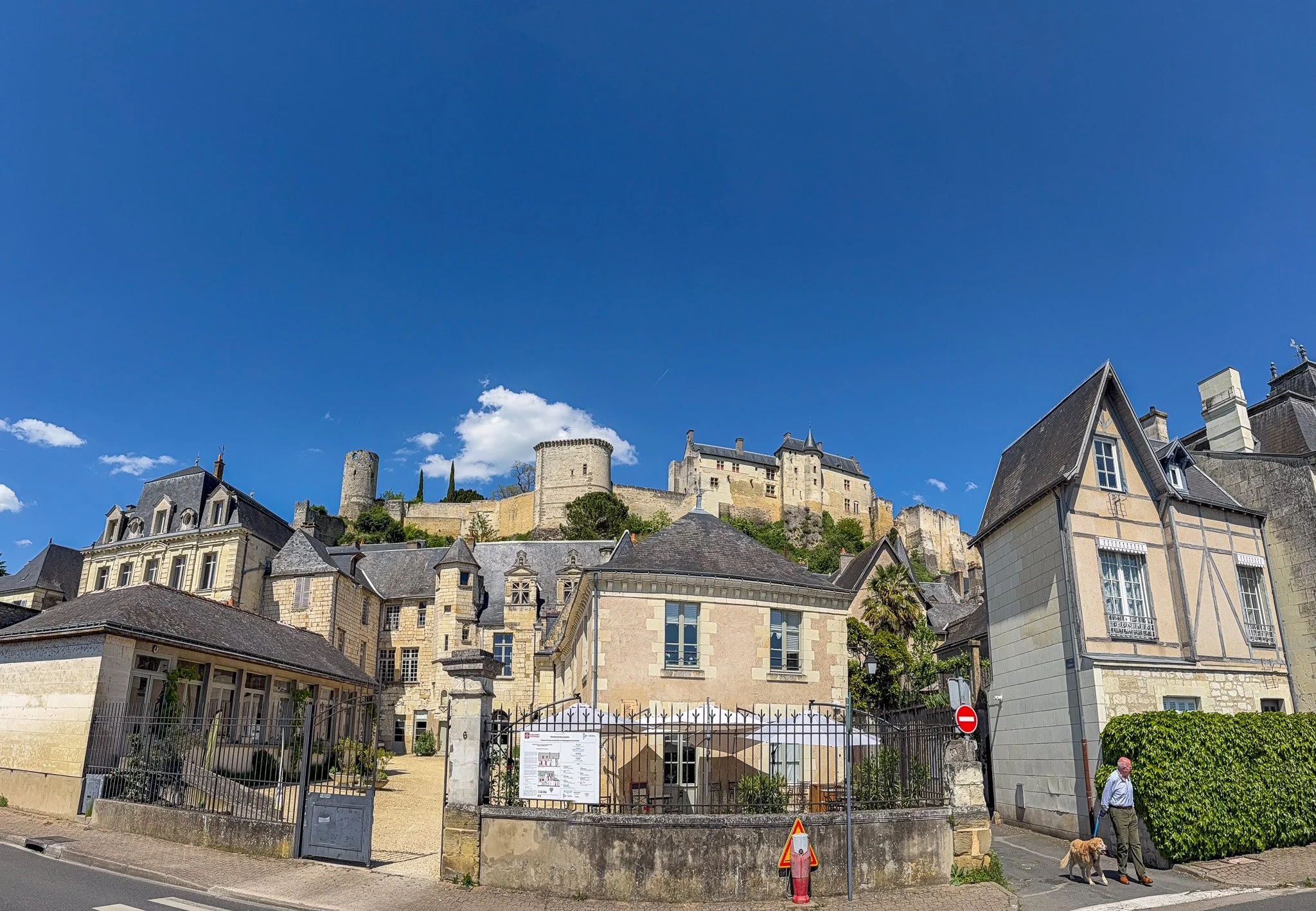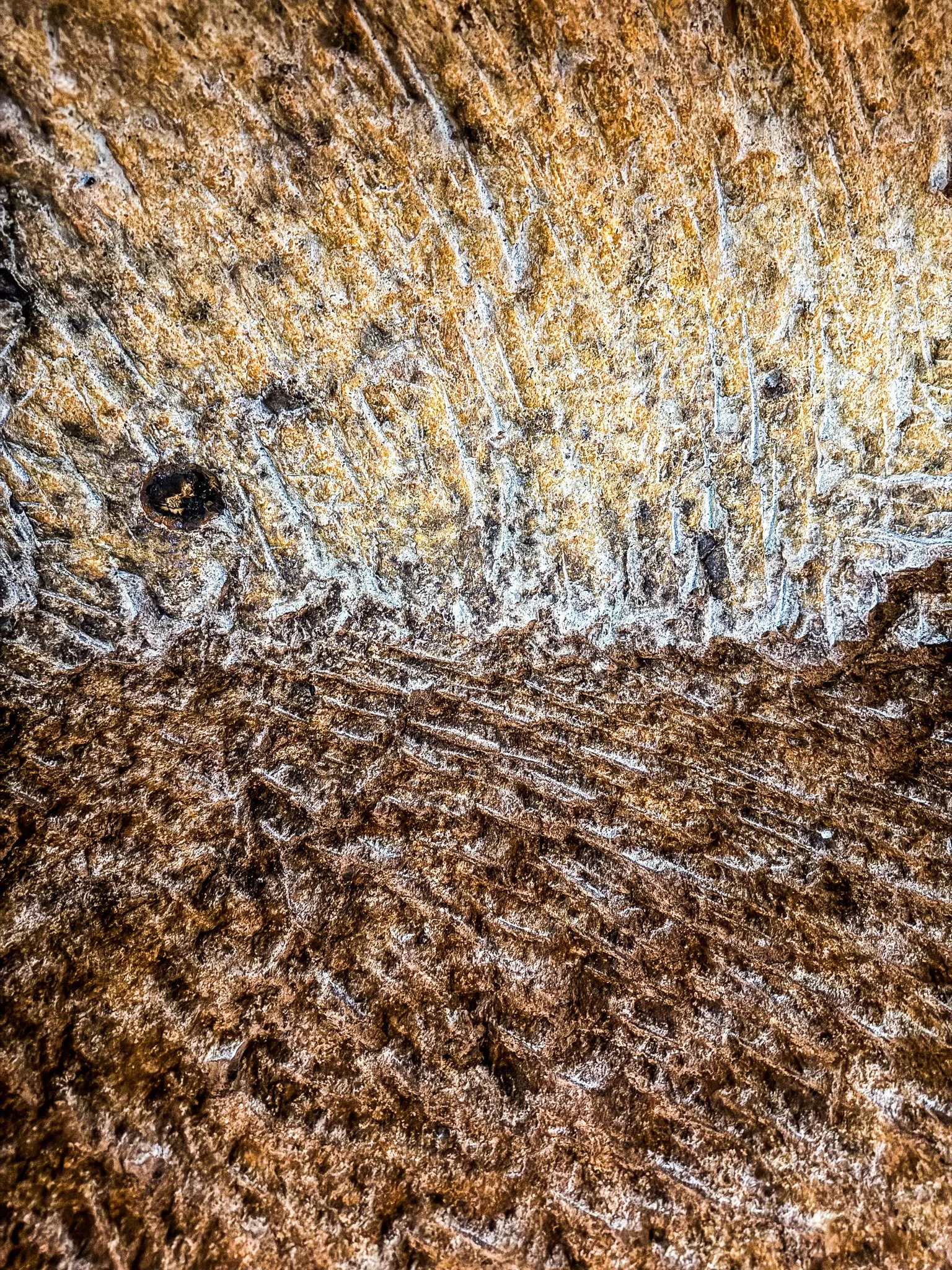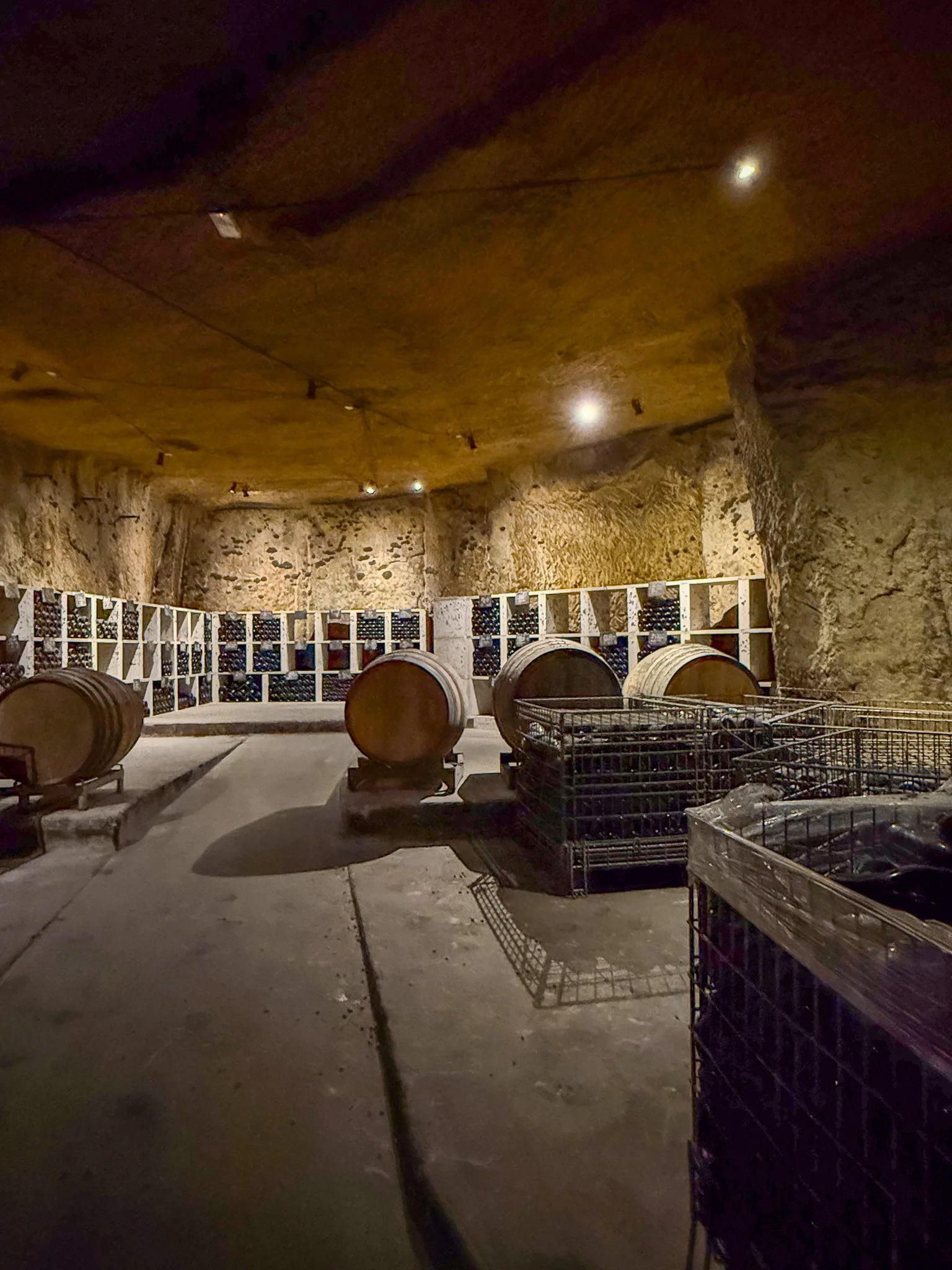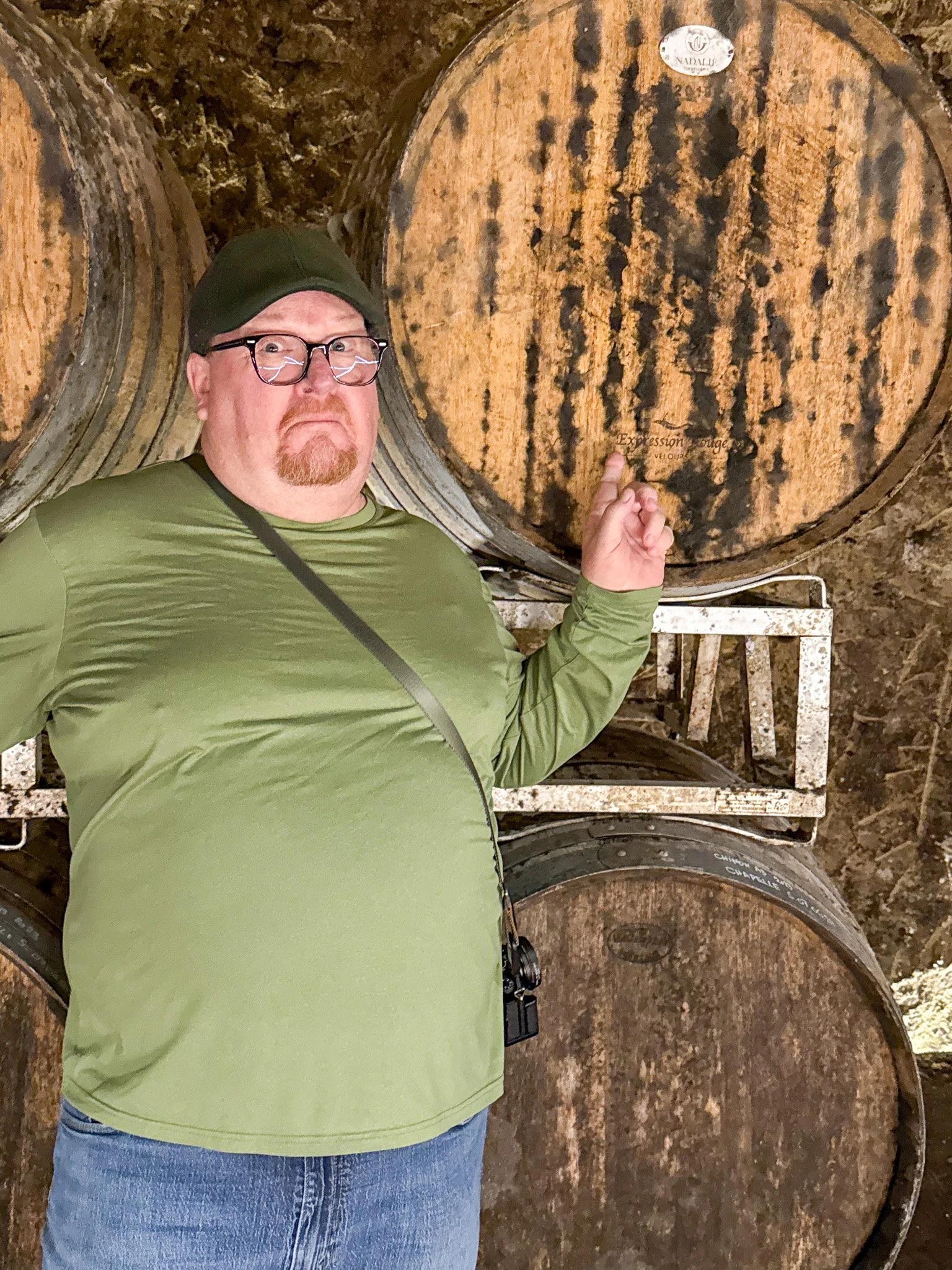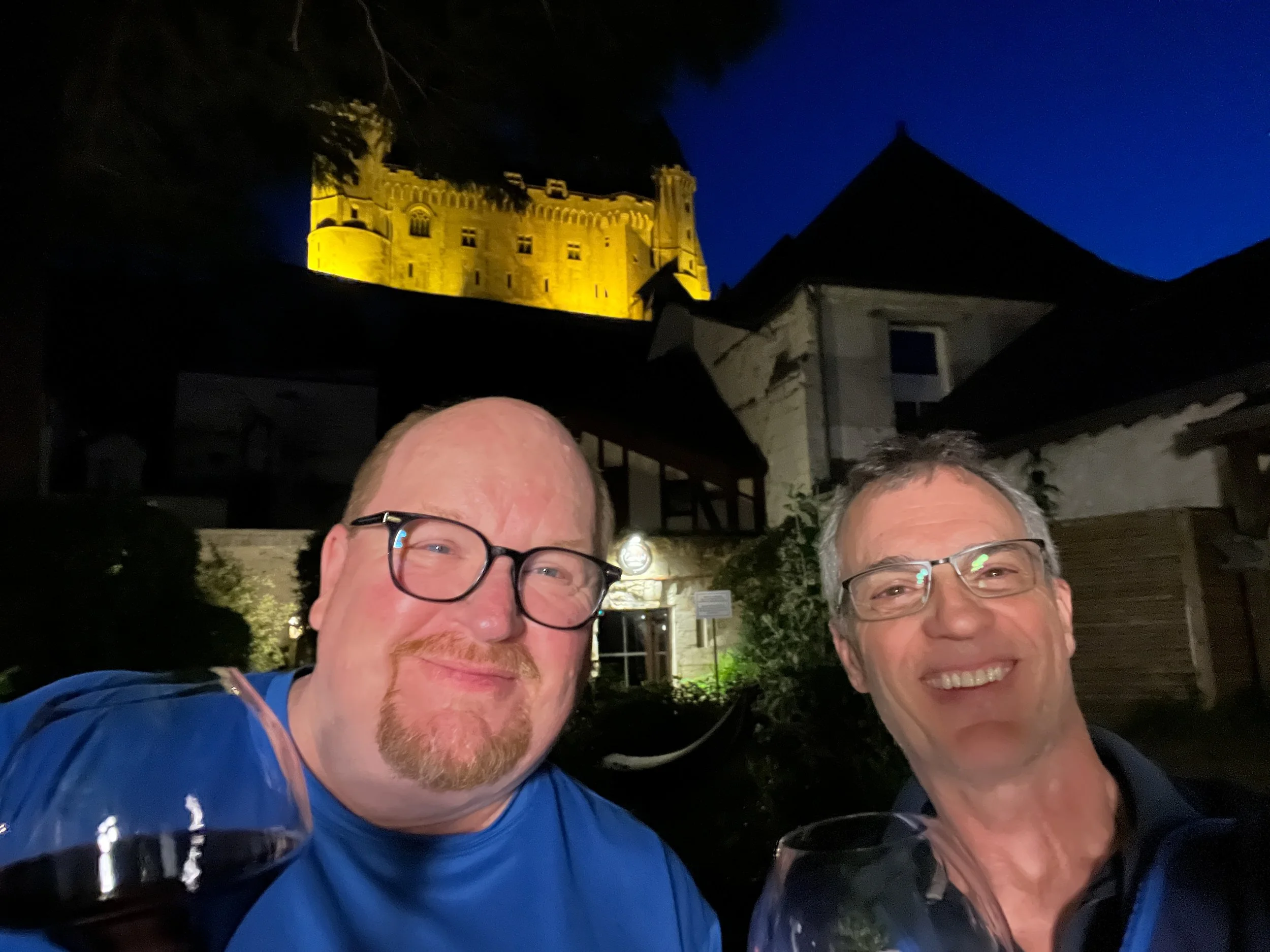Road trip to Normandy, Brittany, and the Loire Valley: Part 4
The Vienne River in Chinon
As the epic road trip with Mark and Marie wound down, we still had one important place to see left on our list: the tuffeau wine caves of Chinon. Tuffeau is a soft limestone that was widely quarried to build castles in the Loire Valley but is also soft enough that caves were dug from it to create wine cellars. This soil, which is a chalky limestone, is also a terrific soil to grow grapes in, as it retains water very well since it is only about 10 to 20% heavier than water. It is very porous (50% porosity)—think of it as a giant underground sponge—and full of mica and ancient sea life, creating a noticeable earthy minerality to the wines of Chinon and the other central Loire Valley wine regions. The most famous are the reds made from the Cabernet Franc grape and the whites made from Chenin Blanc. We set out to not only taste these fabulous wines, but I wanted to put my hands in the soils of the vineyards and then go underground and see these famous caves for myself. I had heard that they were covered with all types of beneficial molds.
We headed east along the Loire River for about a half hour until we met the Vienne River and the village of Candes-Saint-Martin, which marks the fork between these two rivers, then we turned southeast until we reached the tiny village of Ligré. We had an appointment with Eric Santier, a small producer who makes the wines of Domain Dozon. Typical of the kind of interactions I am becoming familiar with in France, we turned off a small road into a small property strewn with old vineyard equipment, dead barrels, and other random farm equipment. As is often the case, there was a few rough looking buildings but no indication of where to go or which door led to the “tasting room,” or if there was even one. But they always hear you coming so they know when you’ve arrived, and somebody always emerges from a random door. And here was a bookish-looking man of medium stature who was at once part accountant and part farmer with his metal framed glasses and his wellies on. He greeted us warmly and had us follow him through one of the doors into a small room that he had set up for us to taste his wines.
We learned that he grew up in the area but didn’t come from a vigneron family. He had always wanted to be a winemaker, and he finally realized his dream when he bought the property, along with several old vineyards nearby, about a decade ago. His English was very good and true to the pedantic nature of his appearance; he frequently corrected our French as we did our best to put it to use. I have learned that when the French do this it means they like you.
The wines he poured ranged from easy drinking rosé and whites through more mature and serious wines, until we reached the truly age worthy reds. His premier wine was the 2022 Le Grand Saut, which came from a vineyard called “Le Saut au Loup” (The Wolf Leap) right in Ligré, a monopole plot selection of 40- to 70-year-old Cabernet Franc vines grown in that same yellow tuffeau I mentioned, rich in micaceous chalk particles. It was powerful wine, full of red berries, cranberries, earthiness, green bell pepper, and lots of grippy young tannins. Kapow! We all agreed that it wouldn’t be ready to drink for many years to come. Mark and Marie ordered a couple of bottles to take with them, and I had Eric mail me some back to Nice. That is one of the great things about living here in France, mailing wine within the country is perfectly legal and cheap. La Poste even has boxes for bottles of two, four, six, or twelve ready to go. Six bottles delivered in as little as 2–3 days is only €19? Score.
The very beginnings of grapes on the vine
I told Eric about my desire to touch the soils in the vineyards, something I try to do in all the regions I visit, and he was happy to let me. He pointed me to the actual Le Saut au Loup vineyard just down the road and wished us well.
We drove the short distance until we reached the vineyard, and I knew we were in the right place because the vines were very old. I always say old vines look like little old men and here was a vineyard with an army full of them standing at attention. As it was early May, new growth had begun on their smallish arms and the leaf buds had already produced inflorescence and tiny bunches of grapes were just beginning to form. I walked a short distance into the vineyard and then reached down to grab two big handfuls of the soil and was very pleasantly surprised to feel just how light they were, like two handfuls of clouds. All of that chalky dirt was as light as a feather. Doing this kind of stuff makes me so happy, and I was beaming. Another wine region of the world notched into my belt and still so many to go.
Holding tuffeau soil in an old vine vineyard in Chinon
We left the vineyard and rejoined the road heading north to the city of Chinon itself, looking for the caves of Marc Plouzeau, another famous vigneron in the area known for being a pioneer of organic wines. When we arrived in the city, we parked along the Vienne River under a row of plane trees and took in the gentle running river in front of us. We turned around towards the Forteresse Royale de Chinon behind us, another giant Loire Vally castle high on a hill with spectacular views of the river and the surrounding region. We knew the caves were somewhere deep under this fort, so we began winding our way up a small road towards the cliff. If you are imagining some kind of small French village with quaint roads and old architecture under blue skies and sunny temperatures, well, you’ve got it exactly right. The roads only became smaller as we walked and at some point, we were pretty sure we had made a wrong turn somewhere along the route, but then suddenly we saw a large cave entrance. Like Bugs Bunny. Like he drew it on the side of the cliff hoping we’d run into it and knock ourselves out. We couldn’t believe our eyes. Across the face of a small building across from the cave’s entrance we saw stenciled the name “M. Pluozeau,” so we had indeed found it.
Only it was closed. Yes, it was 1:30pm and it was France, so even caves close for lunch. The good news was that it would reopen at 2:00pm, so we spent the half hour between staring that cliff, the cave entrance, and the castle high above, snapping many photos and then touching the walls to make sure they were real. They were.
The town of Chinon and the Forteresse Royale de Chinon on the hill above
M. Plouzeau winery and cave
The cave at M. Plouzeau under the Forteresse Royale de Chinon
What’s up, Doc?
When a woman, whose name we later learned was Fanny, showed up right on time, she used a skeleton key to open a set of very large wood doors and then a huge old metal gate behind it to finally let us into the cave. Good Lord. It was huge. We were awestruck. As we moved deeper into the cave and the natural light from the cave opening was replaced with electric lights strategically placed to give the cave a pseudo-club feel, our eyes adjusted and we could see barrels, and a large tasting bar set up. There were displays of wines for sale and places to sit and enjoy wine. But the cave continued well beyond this point, and we were told we could explore all we wanted to. So, we did. And what we found were caves that showed chisel marks from when they were dug. There was also a lot of those molds I heard about. White mold, gray mold, and black, but not that kind of black mold. We all touched the walls, which looked like massive Petrie dishes, and they were wet and disgusting, like petting a slimy bullfrog. The mold covered everything, the barrels, the walls, some old bottles left for display. Molds are a healthy sign that the cellars are the right temperature and humidity levels, which lets you know that the wines are sleeping in just the right environment for aging. I think in old French caves like the one we were in, walls covered in molds were also part of the show because there is a line between a good amount of mold and so much that it might influence the taste of the wines. But it did have me thinking: If these molds are so good for aging gracefully, why aren’t women using it on their faces instead of Oil of Olay? Or maybe Oil of Olay is MOLD! Ba-bum!
Chisel marks on the walls of the truffau cave
Mmmmm…mold. Slimy goodness.
Inside the cave at M. Plouzeau
Mold on the barrels as they age in the caves
Ummmm…clean up on Barrel 5
After we finished exploring the moldy stuff deeper in the cave, we came back to do some tasting. Fortunately, I didn’t taste any moldiness in my wines. Only deliciousness. These wines from Monsieur Plouzeau were even more delicious than Mr Santier’s earlier that day. These were rich, powerful red wines, and full of red berry flavors and a subtle smokiness. The whites were as magnificent as the reds, all made from Chenin Blanc. They had notes of honey, pear, lemon, some wet wool, and beeswax, and again, that chalky minerality from the truffeau soils that they were grown in. Fanny was generous and let us retaste several wines before we made some decisions and then I had yet another package on the way to Nice.
The day in Chinon lived up to all of my pre-visualizations of what it would be like to visit there and now I can’t wait to return. There is a lot of wine from the Loire Valley to taste and a lot of vineyard soils into which I can dip my hands, 170 miles worth to be exact.
Mark and I enjoying the wines of the Loire Valley
The entire trip, which was only ten days, but has required thousands of words over the past month to describe, was the best road trip of my life, filled with amazing food, spectacular wines, bucket list sightseeing, and best of all, long conversations while driving across the French countryside or belly laughs at the dinner table with Mark and Marie. I’ll never forget it.
And, we’re going to do it all again at the end of the month when we meet with Mark and Marie on May 31, only this time in Burgundy.
